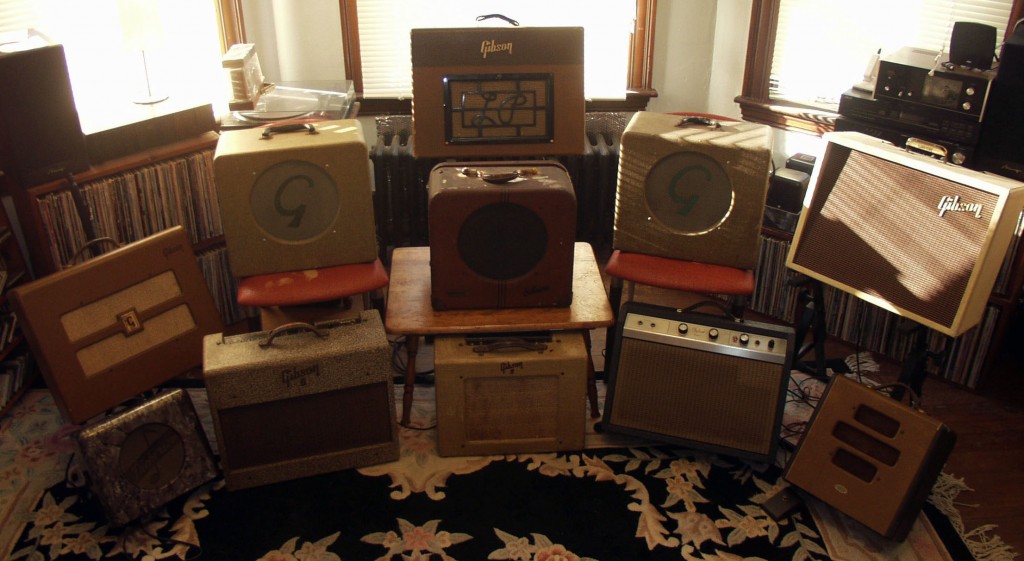Valvealley is both a place for the past and the present. Through this site we hope to add to the knowledge and history of guitar tube amplification, and provide valuable information on a great period for tube driven electric sounds in music history that almost became extinct–if it were left to the accountants…
In the early 20’s with the beginning of electrically amplified sound in radios, PA systems and theaters, the use of vacuum tubes in electrical circuits together with advances in speaker design led the way in musical instrument amplification. By the late 30’s the Hawaiian lap steel craze had become a driving force for innovation and new inventions that brought this new sound to the general public. A steady rise in both electrical circuit technology and manufacturing production–interrupted as most things were by WWII–resumed in great force after the war, and the next two decades saw the rapid development and heyday of tube amplifier production.
But by the mid sixties, another invention–the solid state transmitter–began its assault on tube technology. It had a lot of things going for it–it was more stable, easier and cheaper to mass produce, and easier to assemble. For radios and tvs and stereos, the takeover was swift. Nearly the same happened to instrument amplifiers–it seems looking back now that within a 5 to 10 year period from the this time most tube amps disappeared from sight–but thankfully not from sound. Because there was always something there these amps delivered–call it “tone” if you will, that solid state lacked. It was what all artists knew–an amp and an electric guitar were two parts of a whole, both instruments working together to create a dynamic of sound and music, call and response of the first order. But for a while in the late sixties and early seventies, the tube amp was on life support. It looked grim, and sounded even worse…
Instead, hundreds of musicians, craftspeople and engineers have both rediscovered the gems from the past that have survived and been restored, and re-energized new productions based on their classic designs. So we hope to be able to both educate and celebrate this revival and rebirth of tube amplification, and find places to add our passion for this constructively. It’s not quite magic, but a soulful blending of science, craftsmanship and curiosity that makes this “old” technology so valuable. Sounds good to us…











